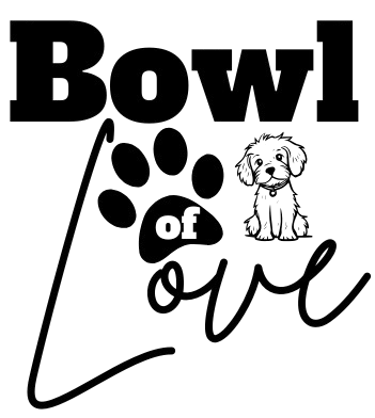The Dangers of Preservatives and Chemicals in Dog Food
What Pet Parents Need to Know According to Science
DOG NUTRITION TIPS
10/3/202513 min read
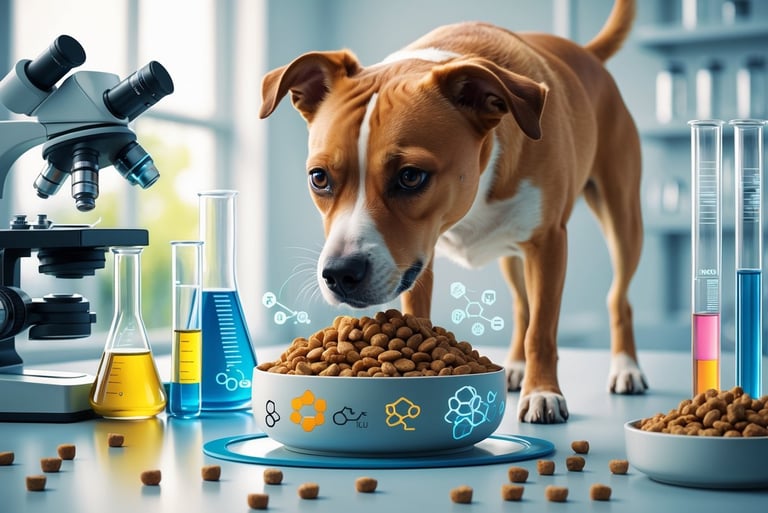

The Dangers of Preservatives and Chemicals in Dog Food
At Bowl of Love, we sometimes recommend trusted products. If you choose to purchase through our links, we may earn a small commission at no additional cost to you. Thank you for supporting our mission to bring healthier food choices to dogs everywhere.
Many dog owners worry about what goes into their pet's food, especially when it comes to preservatives and chemicals. Research shows that certain artificial preservatives like BHA and BHT may pose health risks to dogs, with some studies linking them to cancer and other health problems. The good news is that pet parents can learn to identify these ingredients and make safer choices for their furry friends.
The science behind artificial preservatives in dog food reveals both benefits and concerns. While these chemicals help keep food fresh longer, growing evidence suggests they might harm pets over time. Even a teen researcher recently found potentially harmful preservative levels in common dog food brands.
Understanding which ingredients to avoid and how to spot safer alternatives can help dog owners make better food choices. Natural preservatives exist that keep food fresh without the health risks, and learning to read labels makes all the difference in protecting a dog's long-term health.
Understanding Preservatives and Chemicals in Dog Food
Dog food manufacturers add preservatives and chemicals to keep food fresh and extend shelf life. These additives range from natural options like vitamin E to synthetic compounds that may pose health risks to pets.
What Are Preservatives and Why Are They Used?
Preservatives are substances added to dog food to prevent spoilage and maintain freshness. They stop bacteria, mold, and other harmful organisms from growing in the food.
Synthetic preservatives in dog food are chemicals added during manufacturing. Companies spray them on the outside of food to prevent contamination and discoloration.
Commercial dog food needs preservatives because it sits on store shelves for months. Without these additives, the food would go bad quickly and become unsafe for dogs to eat.
Main reasons manufacturers use preservatives:
Prevent rancidity in fats and oils
Stop bacterial and mold growth
Maintain color and appearance
Extend shelf life for retail sales
Reduce food waste and costs
The challenge lies in balancing food safety with pet health. Some preservatives that keep food fresh may cause problems when dogs eat them regularly over time.
Types of Preservatives: Artificial vs. Natural
Preservatives fall into two main categories: artificial and natural. Each type works differently and has different effects on dog health.
Artificial preservatives are synthetic chemicals made in laboratories. Artificial preservatives are used widely in dog food to increase shelf life. They work very well at preventing spoilage but may cause health concerns.
Common artificial preservatives include BHA, BHT, and ethoxyquin. These chemicals can build up in a dog's body over time.
Natural preservatives come from plants, vitamins, or other natural sources. They include vitamin E (tocopherols), vitamin C (ascorbic acid), and rosemary extract.
Artificial Preservatives include BHA, BHT Ethoxyquin. They usually last longer, have potential health risks, and are less expensive.
Natural Preservatives include Vitamin E and Vitamin C. They usually have a shorter shelf life, generally safer, and more expensive.
Natural preservatives work as antioxidants that slow down fat breakdown. They cost more and don't last as long as artificial ones, but they're generally safer for dogs.
Common Chemicals Found in Dog Food
Beyond preservatives, commercial dog food contains many other chemicals that serve different purposes. Pet owners should know what these additives do and how they might affect their dogs.
The worst preservatives in dog food are synthetic chemicals like BHA, BHT, and ethoxyquin. These compounds have been linked to various health problems in dogs.
BHA and BHT prevent fats from going rancid. Studies suggest these chemicals might cause cancer in laboratory animals. Many countries have banned or restricted their use in human food.
Ethoxyquin was originally developed as a rubber stabilizer. The pet food industry uses it to preserve fish meal and other ingredients. Some studies link it to liver and kidney problems.
Artificial colors like Red 40 and Blue 2 make food look more appealing to humans. Artificial coloring in dog food is only added to enhance product appearance. Dogs don't care about food color, so these additives serve no nutritional purpose.
Flavor enhancers and artificial flavors make food taste better to dogs. While generally safe in small amounts, some dogs may have allergic reactions to certain flavor compounds.
Pet owners should read ingredient labels carefully to identify these chemicals in their dog's food.
Key Artificial Preservatives: What Science Really Says
Research shows that BHA and BHT may cause cancer in lab animals, while ethoxyquin has been banned in human food but remains legal in pet food. Corn syrup and other hidden chemicals create additional health concerns for dogs.
Butylated Hydroxyanisole (BHA) and Butylated Hydroxytoluene (BHT)
BHA and BHT are antioxidant preservatives used to prevent fats from going rancid in dog food. These chemicals extend shelf life but come with serious health concerns.
The National Toxicology Program lists BHA as a possible human carcinogen. Studies show it causes stomach tumors in rats and hamsters. BHT has similar cancer-causing effects in animal studies.
Health Risks Include:
Liver damage
Kidney problems
Behavioral changes
Immune system disruption
Pet food manufacturers still use these preservatives because they are cheap and effective. However, artificial preservatives such as BHT and BHA can lead to significant health risks like cancer and neurological damage.
Many countries have stricter rules about BHA and BHT in human food. Japan banned BHA in human food completely. The European Union limits how much can be used.
Dog owners can avoid these chemicals by reading ingredient labels carefully. Look for foods preserved with natural alternatives like vitamin E or vitamin C instead.
Ethoxyquin: Risks and Regulations
Ethoxyquin was originally developed as a rubber stabilizer and pesticide. The FDA later approved it for animal feed as a preservative.
This chemical prevents fat oxidation in dog food but has concerning side effects. Studies link ethoxyquin to liver damage, kidney problems, and skin allergies in dogs.
Banned in Human Food:
Europe banned ethoxyquin in human food in 1997
United States prohibits it in human food
Still legal in pet food at higher concentrations
Research shows ethoxyquin builds up in dog tissues over time. Fish meal often contains high levels because fishing boats spray it on catch to prevent spoilage.
The chemical crosses into puppies through mother's milk. Pregnant dogs fed ethoxyquin pass it to their babies before birth.
Many premium dog food brands now avoid ethoxyquin completely. They use natural preservatives or freeze-drying methods instead.
Pet owners should check labels for ethoxyquin, especially in foods containing fish meal or chicken meal.
Corn Syrup and Other Hidden Chemicals
Corn syrup appears in many dog foods as a cheap sweetener and binding agent. Dogs do not need added sugars in their diet, making this ingredient unnecessary.
Regular corn syrup consumption leads to obesity, diabetes, and dental problems in dogs. It provides empty calories without nutritional benefits.
Common Hidden Chemicals:
Propylene glycol (antifreeze component)
Sodium nitrite (color preservative)
Artificial food dyes
Chemical flavor enhancers
Food manufacturers often hide these additives under vague names like "natural flavors" or "spices." Ultra-processed foods contain combinations of all these additives and are particularly concerning.
Propylene glycol keeps semi-moist dog treats soft but can cause red blood cell damage. The FDA banned it from cat food but still allows it in dog food.
Artificial colors serve no purpose except marketing appeal. They may cause hyperactivity and allergic reactions in sensitive dogs.
Reading ingredient lists helps pet owners identify these hidden chemicals. Ingredients are listed by weight, so items near the top make up most of the food.
Health Risks Associated With Preservatives in Dog Food
Research shows that certain preservatives in commercial dog food can cause serious health problems in dogs. Chemical preservatives like BHA and BHT have been linked to cancer, liver disease, and thyroid problems in dogs.
Scientific Findings on Cancer and Chronic Diseases
Studies have connected artificial preservatives to cancer development in dogs. BHA and BHT are two preservatives that have been linked to cancer when used in pet food products.
Ethoxyquin poses particularly serious risks. This preservative was originally developed as a rubber stabilizer before being used in dog food. Research suggests it may cause liver damage and kidney problems in dogs.
These preservatives can accumulate in a dog's body over time, potentially leading to chronic health problems such as cancer, organ damage, and immune system dysfunction. The buildup happens slowly, making the connection between preservatives and illness harder to spot.
Common harmful preservatives include:
BHA (Butylated Hydroxyanisole)
BHT (Butylated Hydroxytoluene)
Ethoxyquin
TBHQ
Propyl gallate
Veterinarians recommend avoiding these chemicals completely. Many pet owners don't realize their dog's food contains these risky ingredients until health problems appear.
Behavioral and Developmental Concerns
Preservatives can affect how dogs act and develop. Some dogs become hyperactive or anxious after eating foods with artificial chemicals.
Young puppies face the biggest risks. Their developing brains and organs are more sensitive to chemical exposure. Chemical preservatives and over processing can cause digestive issues and may even be toxic for dogs.
Behavioral changes may include:
Increased aggression
Hyperactivity
Difficulty concentrating during training
Sleep problems
Pregnant dogs fed preservative-heavy diets may have puppies with developmental issues. The chemicals can cross into developing puppies and affect their growth.
Some dogs show learning difficulties when exposed to high levels of preservatives. Training becomes harder, and dogs may seem confused or distracted.
Allergic Reactions and Sensitivities
Many dogs develop allergies to synthetic preservatives over time. These reactions often start small but get worse with continued exposure.
Common allergy symptoms include:
Itchy skin and excessive scratching
Red, inflamed ears
Digestive upset and diarrhea
Hot spots and skin infections
Food sensitivities from preservatives are different from regular food allergies. Dogs may not show immediate reactions but develop chronic health problems instead.
Some breeds are more sensitive to preservatives than others. Smaller dogs often react more strongly because their bodies process chemicals differently than larger breeds.
Veterinarians often struggle to identify preservative allergies because symptoms look similar to other conditions. Switching to preservative-free dog food usually helps confirm the diagnosis.
Chemical preservatives can cause digestive issues that persist even after switching foods. The dog's digestive system needs time to heal from chemical exposure.
How to Identify and Avoid Dangerous Ingredients
Dog owners can protect their pets by learning to read ingredient lists and understanding what manufacturers hide behind confusing names. Many dangerous dog food preservatives appear in common brands using technical terms that mask their harmful effects.
Deciphering Dog Food Labels
Dog food labels list ingredients by weight, with the heaviest items first. Pet owners should look for whole meats, vegetables, and fruits at the top of the list.
Red Flag Ingredients to Avoid:
BHA and BHT
Ethoxyquin
Propylene glycol
Artificial colors (Red 40, Blue 2, Yellow 6)
By-products and meals from unknown sources
The ingredient panel tells the real story about quality. If dog owners see long chemical names they cannot pronounce, the food likely contains synthetic additives.
What Good Labels Look Like:
Named meat sources (chicken, beef, salmon)
Whole grains or vegetables
Natural preservatives (mixed tocopherols, rosemary extract)
No artificial colors or flavors
Many premium brands like Acana list specific meat percentages. They show exactly how much fresh chicken or fish goes into each recipe.
Hidden Preservatives: What Manufacturers Don't Tell You
Manufacturers often hide chemical additives behind vague terms like "natural flavors" or "preservatives." These can include dangerous chemicals that studies link to health problems.
Common Hidden Names:
"Mixed tocopherols" (usually safe, vitamin E-based)
"Natural flavors" (can contain MSG or other additives)
"Chicken fat preserved with BHA" (often buried in small print)
Some companies buy pre-preserved ingredients. They do not have to list BHA or BHT if suppliers add these chemicals before the ingredients reach their facility.
Pet owners should call manufacturers directly to ask about their preservation methods. Quality companies will answer questions about their ingredient sourcing and processing.
Questions to Ask:
What preservatives do suppliers use?
Are any artificial colors added?
Where do meat ingredients come from?
The Role of Dog Food Brands
Different dog food brands take vastly different approaches to ingredients and preservation. Premium brands typically use natural preservatives and avoid artificial additives entirely.
High-Quality Brands Typically:
Source ingredients from trusted suppliers
Use natural preservation methods
Avoid artificial colors and flavors
Test for contaminants regularly
Budget brands often rely on chemical preservatives to extend shelf life and reduce costs. These companies may use the cheapest ingredients available.
Many pet owners assume expensive means better, but price alone does not guarantee quality. Some mid-range brands offer excellent nutrition without harmful additives.
Brand Research Tips:
Check company websites for ingredient sourcing information
Look for brands that list specific farms or regions
Avoid companies that refuse to answer ingredient questions
Read independent reviews from veterinary nutritionists
Quality dog food brands will proudly share their ingredient standards and manufacturing processes with concerned pet owners.
Natural Alternatives: Safe Ways to Preserve Dog Food
Natural preservatives like vitamin E and rosemary oil offer pet owners safer options for keeping their dog's food fresh. These natural ingredients work as antioxidants to prevent fats from going rancid without the health risks of chemical preservatives.
Natural Preservatives: Vitamin E and Rosemary Oil
Vitamin E (Mixed Tocopherols) acts as a powerful antioxidant in dog food. It stops fats from breaking down and becoming rancid. Most dog food makers use mixed tocopherols because they work better than single forms of vitamin E.
Rosemary naturally contains properties that prevent the oxidation and breakdown of foods, especially oils and fats. The herb releases compounds that protect food from spoiling. It also adds a pleasant smell to dog food.
Other Natural Options Include:
Ascorbic acid (Vitamin C)
Citric acid from citrus fruits
Salt and honey for homemade foods
Dried egg whites with antimicrobial properties
These natural ingredients have been used to preserve food for thousands of years before artificial chemicals existed. They work by slowing down the processes that cause food to spoil.
Benefits of Choosing Naturally Preserved Foods
Dogs face fewer health risks when eating naturally preserved food. Natural preservatives are effective for shorter periods of time than artificial preservatives, which means fresher food for pets.
Key Benefits:
No toxic chemical buildup in the dog's body
Reduced risk of allergic reactions
Better long-term health outcomes
Fresher ingredients due to shorter shelf life
Pet owners should check food labels for these natural preservatives. Foods with shorter expiration dates often indicate natural preservation methods. This means the food contains fewer harsh chemicals that could harm their dog's health over time.
Avoiding dangerous chemical preservatives may add years of good health to a pet's life. Natural alternatives provide the same protection against spoilage without the health concerns.
Tips for Choosing and Transitioning to Safer Dog Foods
Working with a veterinarian helps identify the best food options for each dog's specific needs. A gradual transition process prevents digestive upset and allows dogs to adjust to new ingredients safely.
Consulting With Your Veterinarian
A veterinarian provides the best guidance when selecting safer dog food options. They understand each dog's health history, allergies, and nutritional requirements.
Pet owners should bring their current dog food packaging to veterinary appointments. The veterinarian can review the ingredient list and identify harmful preservatives or chemicals.
Key questions to ask include:
Which preservatives should be avoided for this specific dog?
Are there recommended quality dog food brands?
Does the dog have any food sensitivities?
What nutritional requirements need special attention?
Veterinarians often recommend avoiding dog foods with artificial preservatives like BHA, BHT, and ethoxyquin. These chemicals may pose health risks over time.
Some dogs need prescription diets due to medical conditions. The veterinarian will specify if special dietary requirements exist before making any food changes.
Making the Switch: Best Practices for Your Dog's Health
Choosing high-quality dog food means looking for options with natural preservatives and minimal artificial additives. Quality dog food brands typically use vitamin E or vitamin C as natural preservatives instead of chemicals.
The transition should follow this timeline:
Days 1-3: 75% old food, 25% new food
Days 4-6: 50% old food, 50% new food
Days 7-9: 25% old food, 75% new food
Day 10: 100% new food
A gradual transition prevents digestive problems like diarrhea that can occur when switching foods too quickly. This process allows the dog's digestive system to adjust to new ingredients.
Pet owners should monitor their dog for any signs of digestive upset during the transition. If problems occur, they should slow down the process or consult their veterinarian.
Many dog food brands offer money-back guarantees for new customers. This reduces the financial risk when switching to safer food options.
Frequently Asked Questions
Pet owners often have specific concerns about chemical preservatives like BHA, BHT, and phosphate compounds in commercial dog foods. Many want to know about cancer risks, safety levels, and how to find cleaner alternatives for their dogs.
What are the potential side effects of sodium hexametaphosphate in dog diets?
Sodium hexametaphosphate is commonly used in dog food as a dental health additive. It helps reduce tartar buildup on dogs' teeth. Most dogs tolerate this compound well when used in approved amounts.
Some dogs may experience digestive upset if they consume large quantities. This can include mild stomach irritation or loose stools. These effects are typically temporary and resolve quickly.
The FDA considers sodium hexametaphosphate safe for use in pet food when used properly. No major health risks have been documented in dogs at normal dietary levels.
How can I identify dog foods without BHA and BHT preservatives?
Reading ingredient labels is the best way to avoid BHA and BHT in dog food. These preservatives must be listed by name on the ingredient panel. Look for them near the end of the ingredient list.
Artificial preservatives like BHA and BHT can pose long-term health risks to dogs according to some pet nutrition experts. Many brands now use natural alternatives instead.
Look for foods preserved with tocopherols (vitamin E), ascorbic acid (vitamin C), or rosemary extract. These natural preservatives are considered safer options for dogs.
Choose brands that clearly state "no artificial preservatives" on their packaging. Many premium dog food companies have moved away from synthetic preservatives entirely.
Is there a link between BHA and cancer development in dogs?
Studies on BHA and cancer in dogs are limited compared to research in other animals. Laboratory studies in rats and mice have shown some cancer concerns with high doses of BHA.
The National Toxicology Program has classified BHA as "reasonably anticipated to be a human carcinogen." However, direct evidence in dogs is not as clear or extensive.
Some veterinary nutritionists recommend avoiding BHA as a precaution. They suggest choosing dog foods with natural preservatives instead. The risk appears to be related to long-term exposure and dosage levels.
What are the recommended safety levels of sodium tripolyphosphate in dog food?
The Association of American Feed Control Officials (AAFCO) sets guidelines for phosphorus compounds in pet food. Sodium tripolyphosphate falls under these general phosphorus regulations.
Most commercial dog foods contain sodium tripolyphosphate at levels well below safety concerns. It's typically used in small amounts as a preservative and texture enhancer.
Dogs with kidney disease should avoid foods high in phosphorus compounds. Pet owners should consult their veterinarian about phosphorus levels if their dog has health issues.
Can you suggest some preservative-free dog food options?
Freeze-dried dog foods often contain fewer artificial preservatives than traditional kibble. The freeze-drying process naturally preserves the food without chemical additives.
Fresh and frozen dog food brands typically use minimal preservatives. These foods rely on refrigeration or freezing for preservation instead of chemicals.
Some well-known brands offer preservative-free options using only natural preservation methods. Look for foods stored in the refrigerated or frozen sections of pet stores.
Raw dog food diets contain no artificial preservatives but require careful handling. These foods must be kept frozen until use and thawed safely.
What homemade dog food recipes are best for dogs with a history of cancer?
Lean proteins like chicken breast, turkey, and fish form the foundation of cancer-fighting dog diets. These provide essential amino acids without excess fat that could promote inflammation.
Vegetables like broccoli, carrots, and sweet potatoes add antioxidants and fiber. These nutrients may help support the immune system in dogs recovering from cancer.
Avoid processed ingredients, artificial preservatives, and high-fat foods in homemade recipes. Simple, whole food ingredients are generally better for dogs with cancer histories.
Always consult with a veterinary nutritionist before switching to homemade food. Dogs with cancer may have specific nutritional needs that require professional guidance.
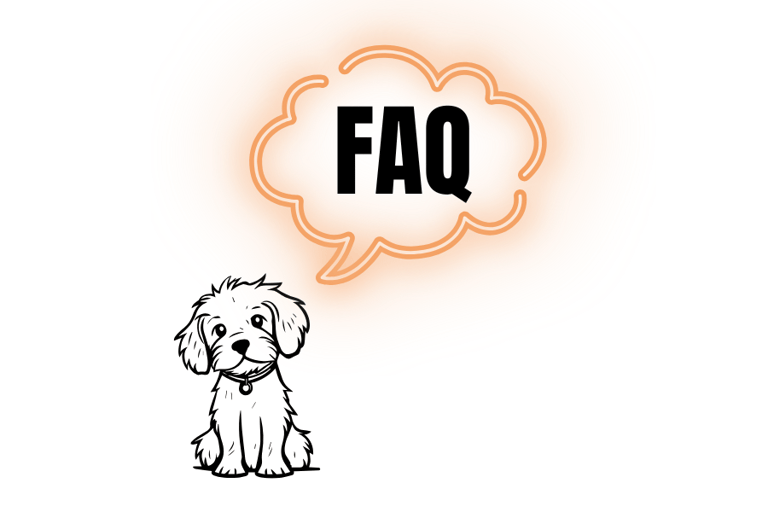

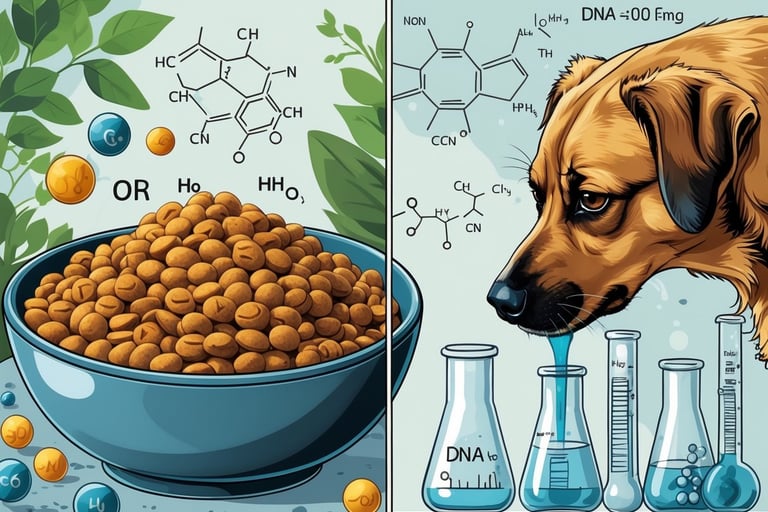

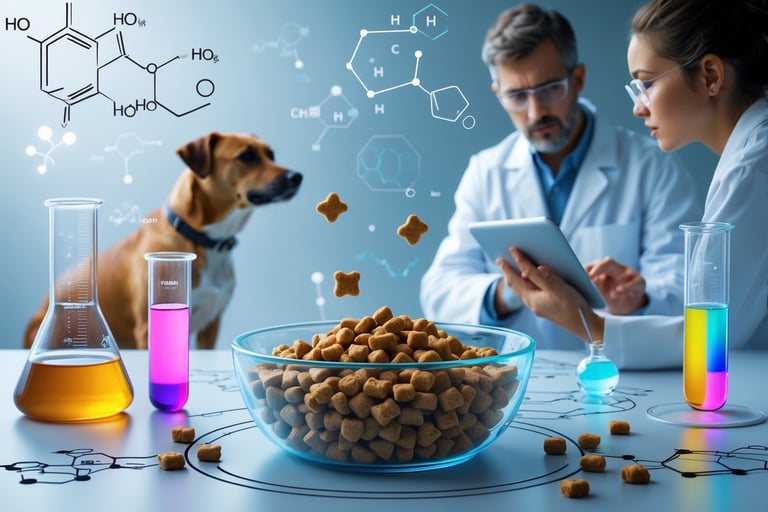

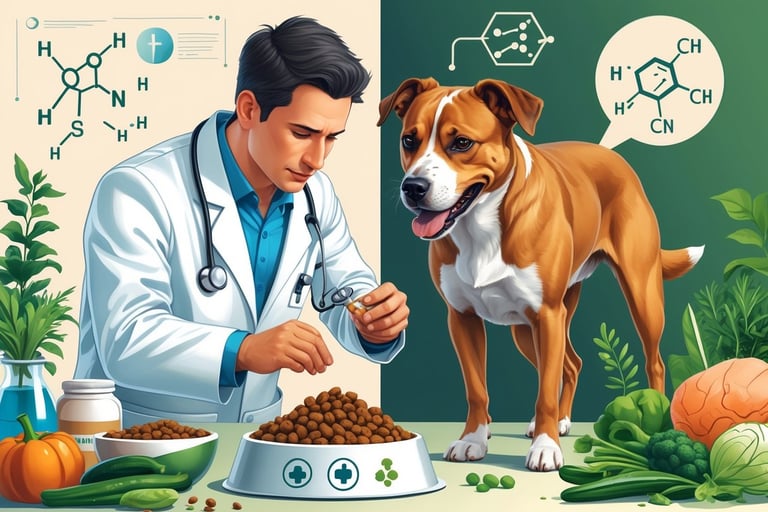

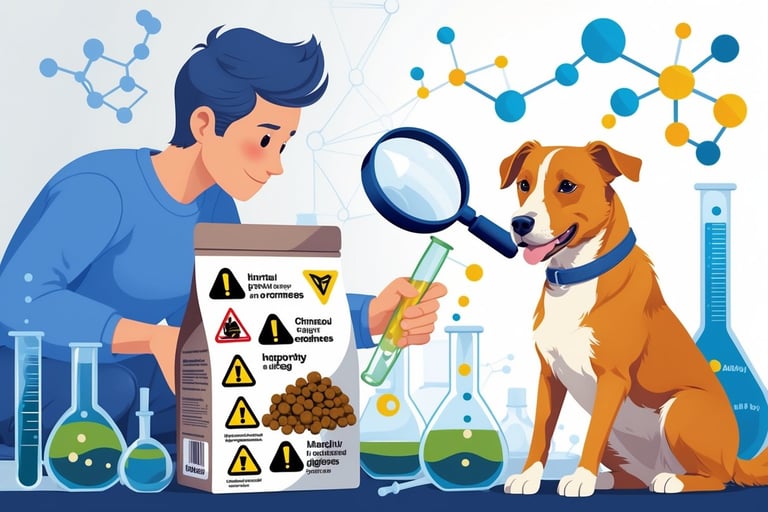

Connect
Reach out for support and inquiries.
Subscribe
contactbowloflove@gmail.com
© 2025. All rights reserved.
